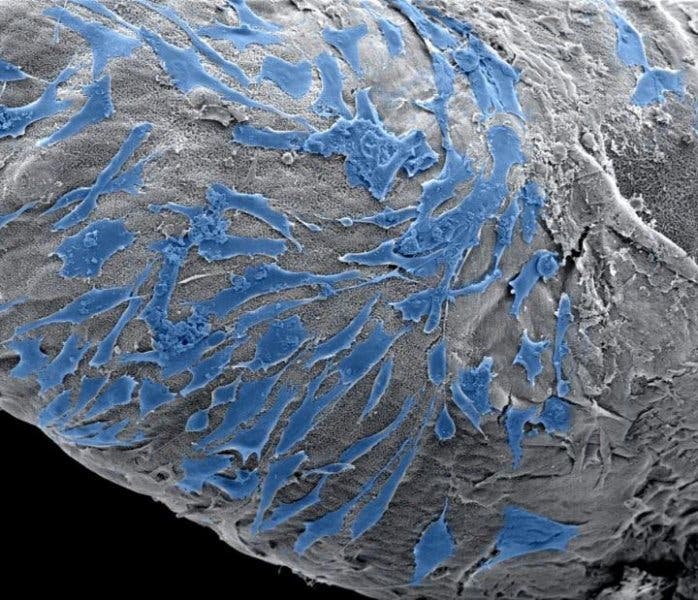UK researchers have developed a new 3D printing technique — but this press prints not in plastic, glass, or metal, but rather in cells and molecules you’d normally find in living tissue.

Image credits Clara Hedegaard.
Ever felt the need for a piece of living matter but without all the messy “organism” part that just complicates everything? Well, you’re in luck, because a team from the Queen Mary University in London has developed a 3D printing technique “capable of encapsulating and spatially distributing multiple cell types within tuneable pericellular environments.”
The process embeds cells and other molecules in an ink that simulates conditions inside living organisms. Because of this, the building blocks used in printing can behave largely as they would in the body, allowing researchers to explore new avenues of study for biological structures.
“The technique opens the possibility to design and create biological scenarios like complex and specific cell environments, which can be used in different fields such as tissue engineering by creating constructs that resemble tissues or in vitro models,” says Professor Alvaro Mata, the paper’s corresponding author. “[These constructs] can be used to test drugs in a more efficient manner.”
The technique actually mixes two ‘printing’ styles together: molecular self-assembly, described in a university press release as “building structures by assembling molecules like Lego pieces”, and additive manufacturing, the layer-upon-layer approach used in more traditional 3D printing.
Using the two processes in tandem allows the researchers to digitally design and then manufacture structures “with molecular precision” while creating cells and other bioconstructs that mimic tissues or whole body parts.
“This method enables the possibility to build 3D structures by printing multiple types of biomolecules capable of assembling into well defined structures at multiple scales,” says lead author Clara Hedegaard.
“Because of this, the self-assembling ink provides an opportunity to control the chemical and physical properties during and after printing, which can be tuned to stimulate cell behaviour.”
The research addresses a major shortcoming of current 3D-printing techniques: a very limited capacity to stimulate the cells that are being printed, the authors note. The structures printed using this new method hold promise as test-bed-tissues for tissue engineering or regenerative medicine.
The paper “Hydrodynamically Guided Hierarchical Self-Assembly of Peptide-Protein Bioinks” has been published in the journal Advanced Functional Materials.






